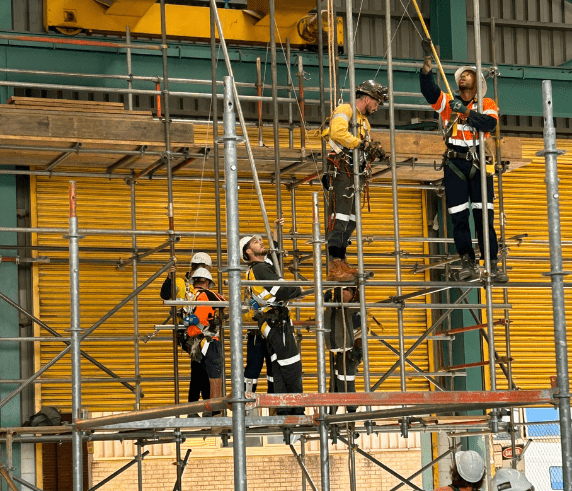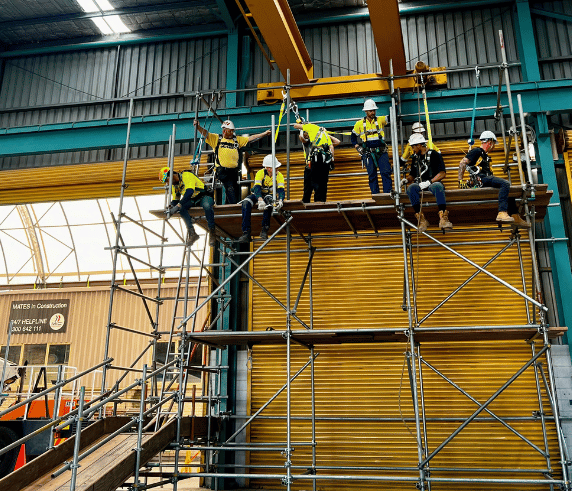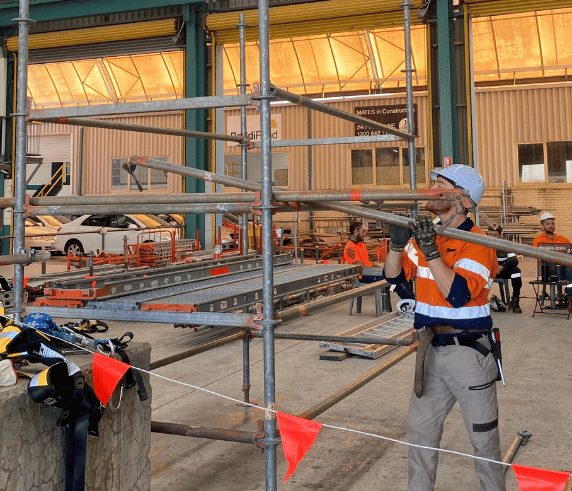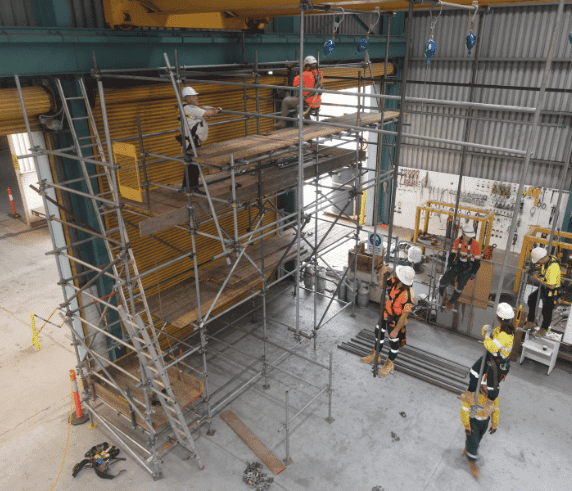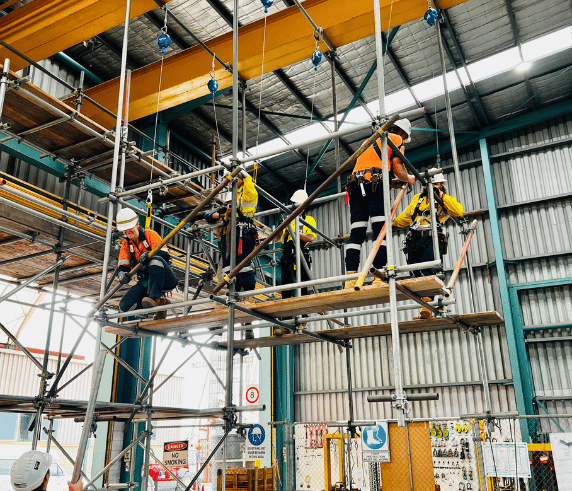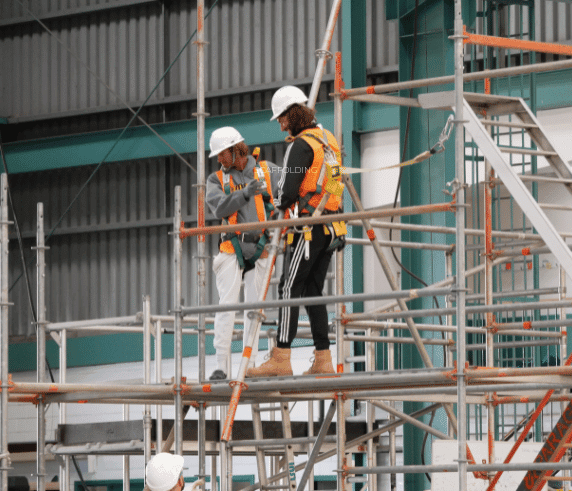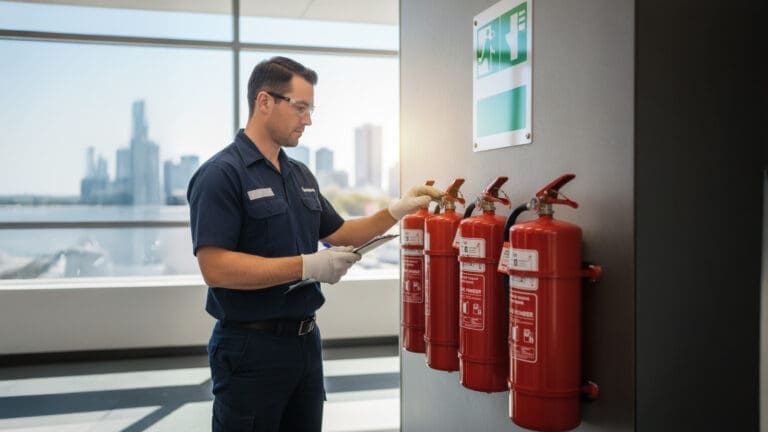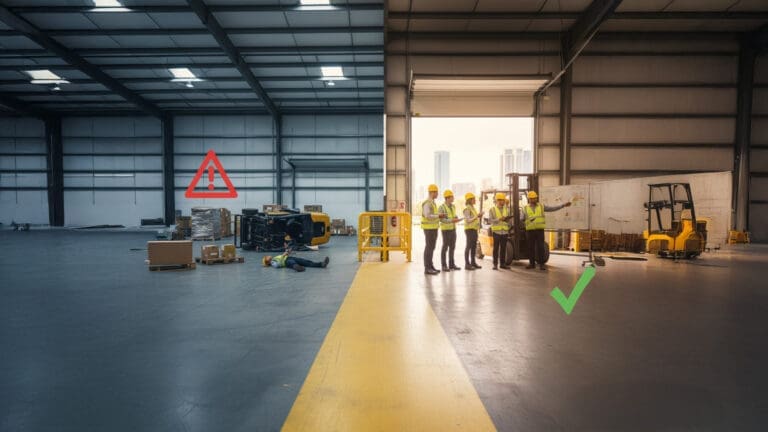Are you considering a career in scaffolding in Australia? Scaffolding is a vital part of the construction and maintenance industries, offering stable employment, growth opportunities, and competitive earnings. This guide covers everything you need to know about becoming a scaffolder, potential career pathways, and how much you can earn in this field.
What Does a Scaffolder Do?
Scaffolders are essential to the construction industry, taking on a variety of responsibilities to ensure that workers can perform tasks safely at heights. Here’s a straightforward look at what they do:
- Work Environment: Scaffolders often work at significant heights, in various weather conditions, and may need to work longer hours to meet deadlines.
- Planning and Inspection: Scaffolders begin by inspecting the site and calculating the type of scaffolding needed for the project.
- Assembly: They unload scaffolding materials, assemble the framework using tubing and braces, and attach necessary components like ladders and rails.
- Maintenance: Scaffolders regularly check and maintain scaffolding equipment to ensure everything is in safe working order.
- Safety Checks: They inspect the scaffolding structures throughout the project to make sure they comply with safety standards.
- Dismantling: Once the job is complete, scaffolders take down the scaffolding and store the materials properly.
Earnings Potential
In Australia, the salaries of a scaffolder vary based on experience, qualifications and industry.
- Entry-level Scaffolders: Typically earn between $70,000 and $90,000 per year in Australia.
- Experienced Scaffolders: Can earn around $120,000 and $150,000 per year in Australia. If you have the advanced qualifications, you can also secure a job in the offshore mining industry and earn up to $300,000 per year.
- Supervisors, Inspectors and Trainers: Salaries can exceed $150,000 and $300,000 per year in Australia per year, especially in high-demand sectors like mining and offshore oil and gas.

Steps to Become a Scaffolder
1. Gain Qualification
To become a scaffolder, first you need to learn the skills and get the necessary qualifications from a training organisation or by doing a traineeship. While there are benefits for both education pathways, a traineeship can take 12 months to gain a qualification, whereas if you went through an RTO (Registered Training Organisation) course you can gain a qualification within 4 to 5 days.
Saferight Training Academy is an RTO that offers top-tier scaffolding courses in Western Australia, designed for all skill levels:
- Basic Scaffolding (SB): Learn the fundamentals of scaffolding, including how to erect, alter, and dismantle basic scaffolding systems.
- Intermediate Scaffolding (SI): Gain advanced skills in managing more complex scaffolding structures, such as cantilevered and spurred scaffolds.
- Advanced Scaffolding (SA): Master specialised scaffolding systems, including hung and suspended scaffolds.
- Combo Scaffolding (SIA): Learn intermediate and advanced scaffolding skills within a week and accelerate your career faster!
Want to understand the distinctions between Basic, Intermediate, and Advanced levels? Check out our detailed blog post on the differences between scaffolding levels to learn more.
2. High Risk Work Licence (HRWL) for Scaffolding
- Why It’s Important: After completing the necessary training and earning your qualifications, the next crucial step is obtaining a High-Risk Work Licence. This licence is mandatory for all scaffolding work in Australia, ensuring that only trained and competent individuals are allowed to perform high-risk tasks.
- How to Obtain the Licence: You can apply for this licence through WorkSafe or via the training organisation where you completed your scaffolding qualification. Saferight offers this service with a separate fee, making it easier for you to get licensed and start working right after you get your qualifications.
3. Obtain a White Card
- What is a White Card? The White Card, or also known as the ‘Construction Induction Training Card’, is an essential certification for anyone intending to work in the construction industry in Australia. It proves that you have completed the necessary general construction induction training, focusing on workplace health and safety (WHS) standards.
- Why is it Important? Without a White Card, you cannot legally work on a construction site in Australia. It ensures that all workers understand the fundamental safety practices required to maintain a safe working environment, reducing the risk of accidents and injuries on site.
- How to Get a White Card: To obtain your White Card, you must complete a short course provided by a registered training organisation (RTO). The course typically takes a day and covers essential topics such as identifying and managing risks, understanding safety laws, and knowing how to respond to potential hazards.
- Where to Apply: White Card courses are widely available across Australia, and usually offered by Registered Training Organisations. The course code that you should search for is called ‘Prepare to work safely in the construction industry – CPCCWHS1001’ . Once you successfully complete the course, you will receive a White Card that is recognised across the country, allowing you to work on any construction site in Australia.
4. Start Building Your Resume
With all the necessary licences and qualifications in hand, it’s time to start building your resume. Many companies are open to hiring individuals with little to no experience, often providing on-the-job training as you embark on your career. This is a great opportunity to gain practical experience and grow your skills in a real-world environment.
Why Choose Saferight?
Saferight is a leading provider of high-risk work training in Western Australia, known for its comprehensive and industry-compliant courses. By choosing Saferight, you’ll acquire the skills and qualifications needed to advance in your career, ensuring you work safely and efficiently.
Ready to start your career? Enrol in one of Saferight’s expert-led courses today and take the first step towards a rewarding career in scaffolding.


